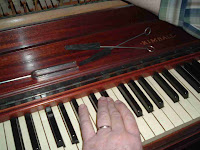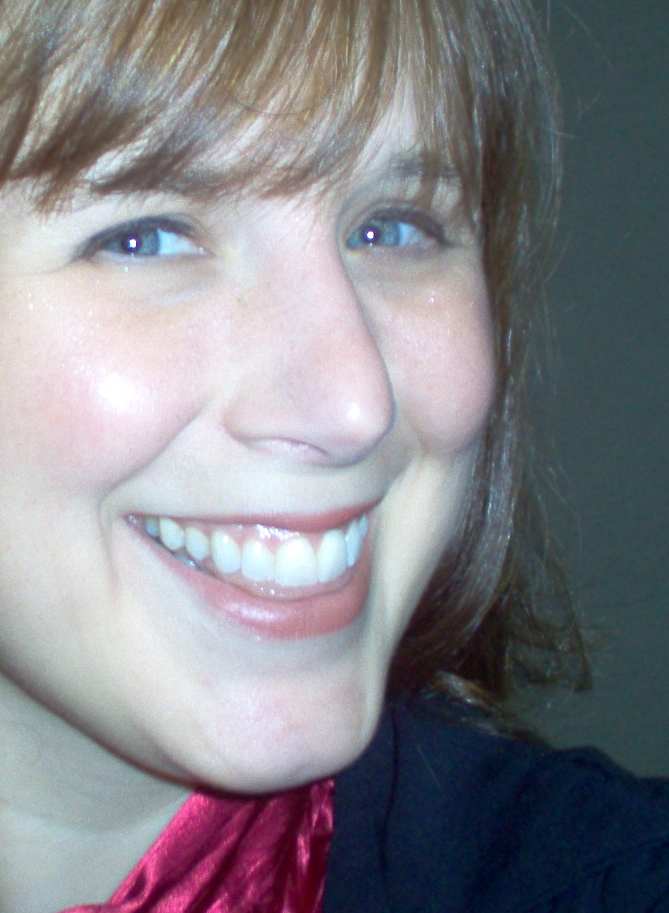 When I was a little girl, I was mesmerized by the many strange "toys" in Dad's toolbox. It's true that it contained regular tools that many other men had in their tool boxes. A hammer, a few wrenches, screw drivers of all shapes and sizes... But, Dad's box also contained odd items... things most people don't recognize. That's because Dad is a piano teacher, piano player... and piano tuner. (Musicians often refer to them as piano technicians these days.)
When I was a little girl, I was mesmerized by the many strange "toys" in Dad's toolbox. It's true that it contained regular tools that many other men had in their tool boxes. A hammer, a few wrenches, screw drivers of all shapes and sizes... But, Dad's box also contained odd items... things most people don't recognize. That's because Dad is a piano teacher, piano player... and piano tuner. (Musicians often refer to them as piano technicians these days.)Before Dad and I set out on our "official adventures" this past Saturday afternoon and evening, I was excited to accompany him while he tuned a piano. This was an activity that was quite common when I was young and at home, but I cannot remember the last time I sat and watched him. First, he tuned Brother Chris' piano, and then he tuned Brother Jeff and Sister Tracy's piano. Here are a few things I learned (or was reminded of) that day:
* Dad received his tuning hammer (tool in Dad's hand, above) from Mr. Bill Gilstrap, a man who Dad worked for and who owned music stores in our area.
* Tuning hammers often come with two (or more) gooseneck heads on them: one for grand pianos and one for others.

* The tuning fork (see the piano ledge, left) rings at the pitch of A above middle C. This rings at the frequency of of 440 Hz and is known as the standard pitch reference (or concert pitch) for pianos, violins, and other instruments. Some piano manufacturers instruct that their pianos be tuned to other frequencies. To read about changes in standard pitch through the years, see this Wikipedia article on pitch.
* The odd items beside the tuning fork are rubber mutes - used to assist a tuner to individually tune each string that combines to create a note on the piano.
* The Kimball piano company has won many awards. (See piano lid in top picture.) :)
 Here is a picture of Dad's strobe, quite different from his old model that I remember from my childhood. Sometimes, Dad tunes by ear, and sometimes, Dad uses the strobe. The strobe supplies a visual cue to let the tuner know if the note is flat (circles moving to the left), sharp (circles turning to the right), or in tune (staying in place.)
Here is a picture of Dad's strobe, quite different from his old model that I remember from my childhood. Sometimes, Dad tunes by ear, and sometimes, Dad uses the strobe. The strobe supplies a visual cue to let the tuner know if the note is flat (circles moving to the left), sharp (circles turning to the right), or in tune (staying in place.)It was quite common for Dad to play some music on the piano after a tuning to give it a "test run". Playing all songs by ear, of course. Saturday morning was no different. First, he gave Tressa a little quiz on some hymns and familiar songs. Then, Tracy, Tressa, Abigail and I had a fun time dancing while Jeff taped the event. The mini concert even included Blue Rondo a la Turk, one of my favorites. Now, I wish I had asked Dad to play Tenderly, my absolute favorite from Dad's large repertoire. Here are some samples of that song from Rosemary Clooney, Sarah Vaughan, Chet Baker, Louis Armstrong, and Jimmy Hamilton (Duke Ellington orchestra). Whenever I hear this song, I immediately think of sitting on the piano bench beside Dad and watching him play. Those times are too few and far between now, so I cherish these opportunities when I can hear him play such beautiful music.

5 comments:
You dad tunes pianos???!!! My, there are a lot around here that need tuning!
That's neat. To be able to tune pianos is so useful, and yet so rare a skill.
I'll have to ask Dad if he can make a tour through Arkansas sometime. Last spring, I was shown a few that need quite a tune-up.
Thanks for stopping by, Nomos. I have wished that Dad and I would live closer so that I could learn how to tune pianos. Maybe we'll just have to set some appointments so I can be his apprentice.
My mother/brother's at home is in need too. Sounds like a good excuse to have you all down here. ;)
It was super nice to get to talk to you last night. Things are about the same, but I'm looking up, so it seems to be better.
Too cool! This was very interesting...
Post a Comment